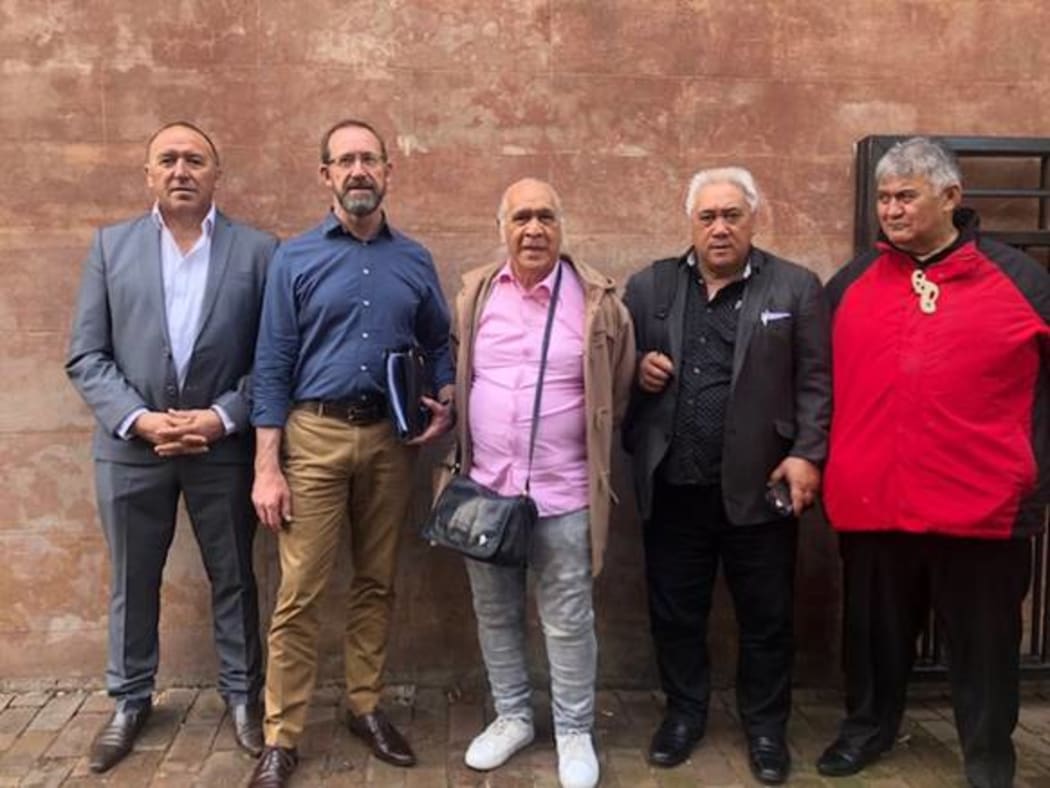The deadline has been pushed back for Ngāpuhi people to offer feedback on the latest plan to get their Treaty settlement underway.

Photo: RNZ / Cole Eastham-Farrelly
Treaty Negotiations Minister Andrew Little and the Ngāpuhi leaders working group have just held a second series of consultation hui around the country, and in Australia, on who should represent the iwi in negotiations.
Submissions were due today on the proposal, but the minister's working group, which involved leaders from both sides of the long running mandate dispute, announced this morning the deadline's been extended to 23 October.
The group said there will also be a third round of consultation hui both here and in Australia starting on 12 October.
In the north, the ancestral home of Ngāpuhi, the sticking points dividing the biggest iwi are still unresolved.
On one side is the Crown and the leaders of Tūhoronuku, which has a conditional mandate to negotiate and want a single cash settlement or quantum.
On the other, the hapū alliance Te Kōtahitanga wants six, based on natural groupings of hapū throughout the region who took their claims to the Waitangi Tribunal.
Tūhoronuku wants seats at the table for the Ngāpuhi rūnanga, whose chair Raniera (Sonny) Tau first set up Tūhoronuku; plus seats for urban Māori, kuia and kaumātua.
The hapū said the rūnanga has no place at the table and everyone else should gain their seats via a hapū selection process.
And since the three hui in Australia at the weekend, there is now a new issue to think about, according to Tūhoronuku chair Hone Sadler.
Big turnouts at the Australian hui had raised some interesting points, Mr Sadler said, and raised the question of how to involve Australian whānau in the settlement process.
"We had more turn out over there than we did at home here. In Perth we had between 50 and 60; Sydney we would have been close to 100; and Brisbane, about 70 to 80," he said.
By contrast, at some of the New Zealand hui only about 30 people turned up.
Hone Sadler blamed hui fatigue.
"I think people are hoha (fed-up).
"They just want to get on. The message is, get in there and settle it. We've been at it now for ten years," he said.
Te Kōtahitanga co-chair Pita Tipene agreed that people wanted to settle their Treaty claims, but not at any cost.
The single biggest bugbear was still the government's insistence that all the cash must go into one pot, Mr Tipene said.
The government has agreed to negotiate separately with the six taiwhenua, (hapū groupings) on cultural redress which could include land and forests.
But Mr Tipene said the hapū wanted to split the quantum in six as well, because of past experience with the single pot system and Ngāpuhi's $60m fisheries settlement.
"Te Rūnanga Iwi o Ngāpuhi, back in 2005 was supposed to be merely a Post Office box, where the money came in and was distributed fairly to everyone," he said.
"What people have seen is that hasn't been the case, so they were promised something they never ever got. And they are afraid that the same leadership, which was in place in 2005, is just doing the same thing. "
Canterbury's Ngāpuhi rep on Tūhoronuku, Erin Shanks, said there was disquiet in the south about a perceived rush to the finish line.
Submissions on the plan had been due today, but the minister's working group had sprung some unexpected changes to it at the latest hui, Mr Shanks said.
One was a proposal to increase the urban Māori seats on the board from four to eight.
"One of those was a seat for Waikato Bay of Plenty Ngāpuhi, and I supported that.
"But to increase it to eight by essentially having five Auckland reps? They say that's done on a population basis; well, if you wanted to settle the Ngāpuhi claims on a population basis, you'd only have one representative from Northland," Mr Shanks said.

From left: Pita Tipene (co-chair of hapū alliance Te Kotahitanga); Treaty Negotiations Minister Andrew Little; Tuhoronuku chair Hone Sadler; Ngāpuhi rūnanga chair Sonny (Raniera)Tau, Rudy Tayor, co-chair Te Kotahitanga. Photo: Supplied
There would be 15 hapū reps at the negotiating table and 11 urban and other seats if the plan went ahead, and that did not reflect the weight the Waitangi Tribunal placed on hapū leading the settlement, he said.
He believed it was likely a number of hapū would walk away if that happened, which would pose problems for any settlement.
"Because they will injunct any property that's under cross-claim and there's a lot of that," Mr Shanks said.
It was possible some hapū might do better financially by pulling out of the Ngāpuhi mandate and biding their time, he said.
"If you can justify in your Waitangi claim quite a large chunk of monetary value, why not wait a couple of years till the Waitangi Tribunal comes out and says those 15,000 acres were stolen from you? You might get more out of it as a single hapū than acting collectively.
"Especially when you'd be relying on a central Ngāpuhi body to distribute resources fairly and that hasn't happened in the past," Mr Shanks said.
In November, Ngāpuhi will be asked to vote on the plan for negotiations, and who should speak for them under an 'evolved' mandate.
Hone Sadler said for the first time in a Treaty settlement there would be separate ballots, one to measure individual support, and one to guage hapū support.
To push on towards settlement, the government would need to see 65 percent of hapū in support of the plan, he said.






